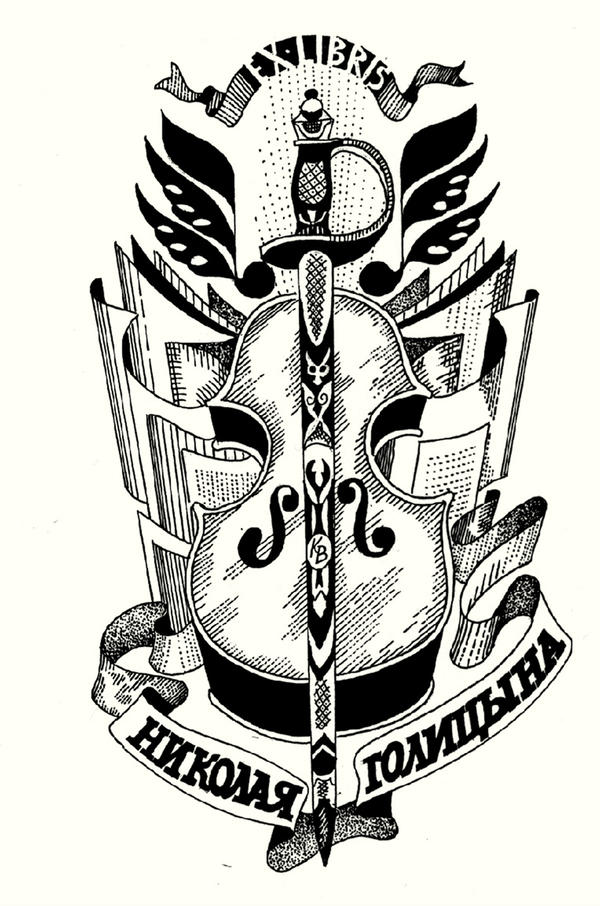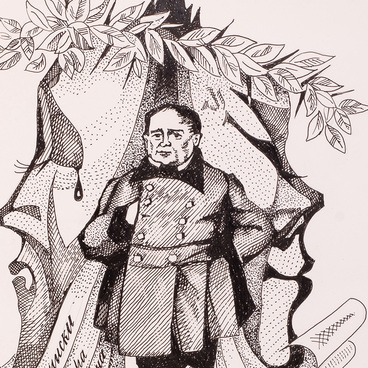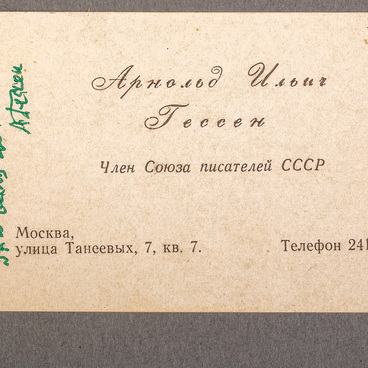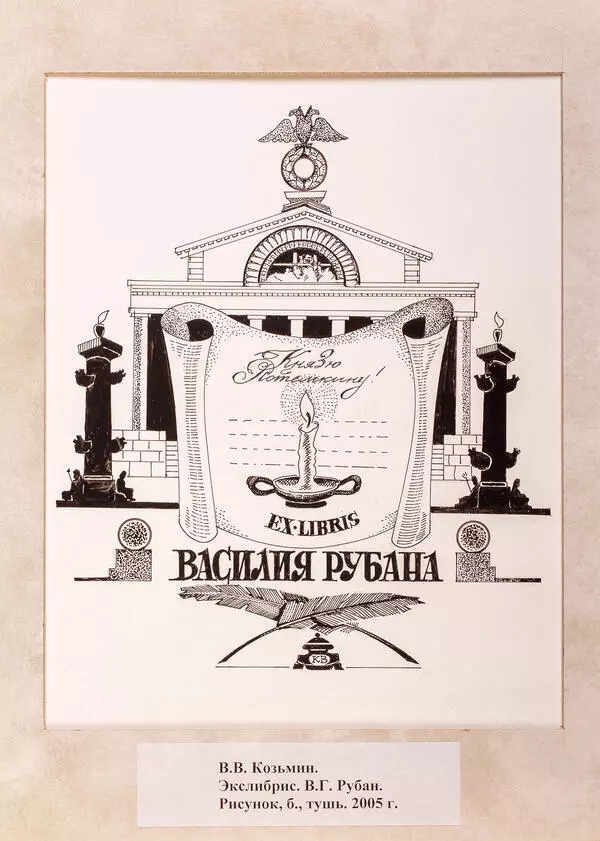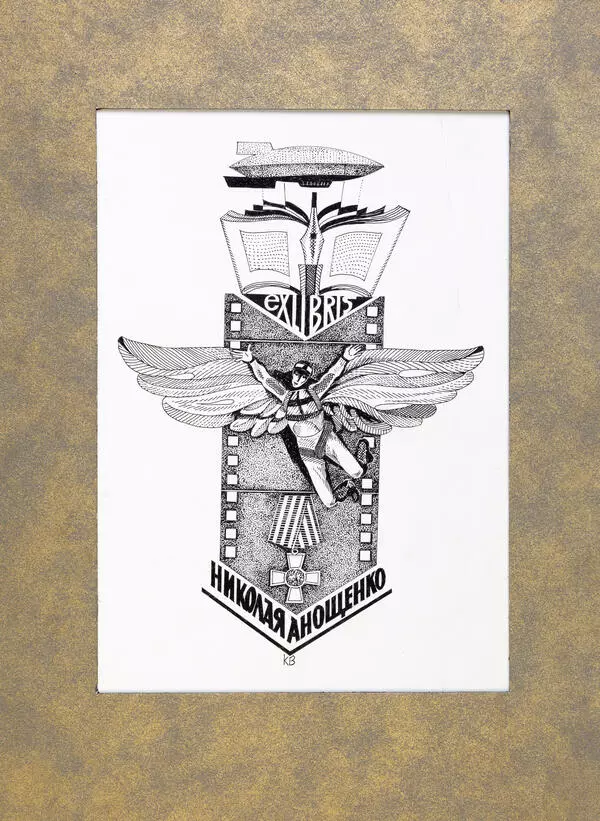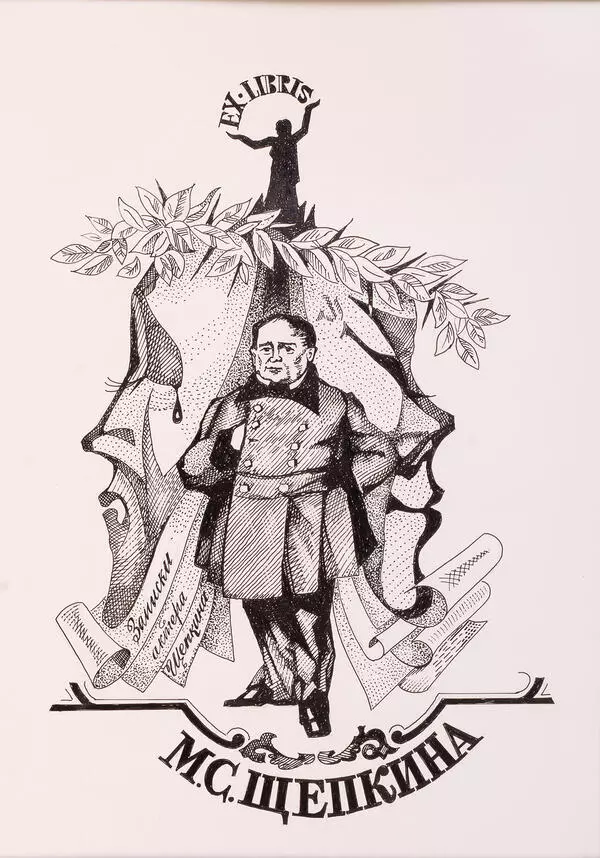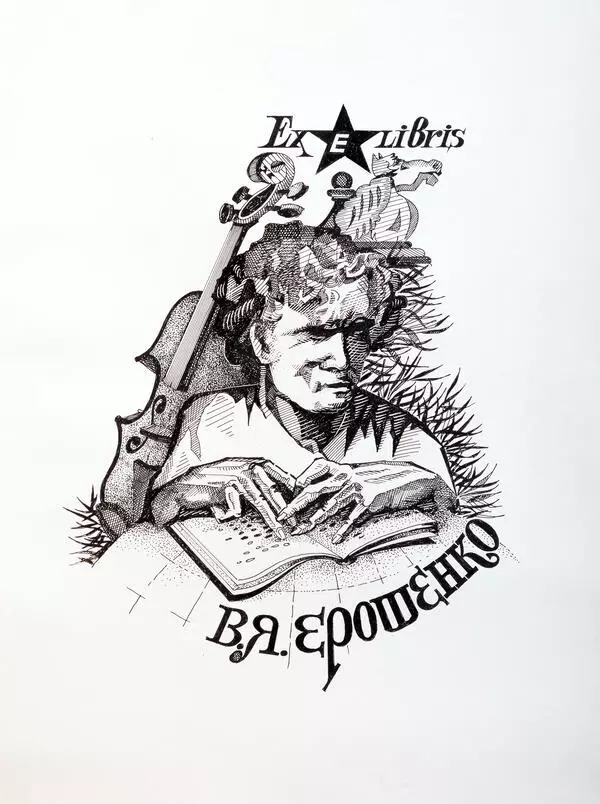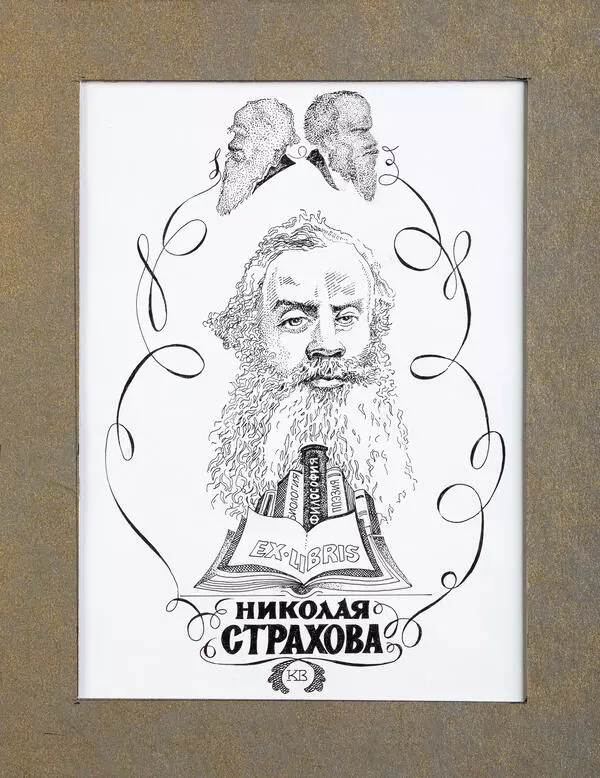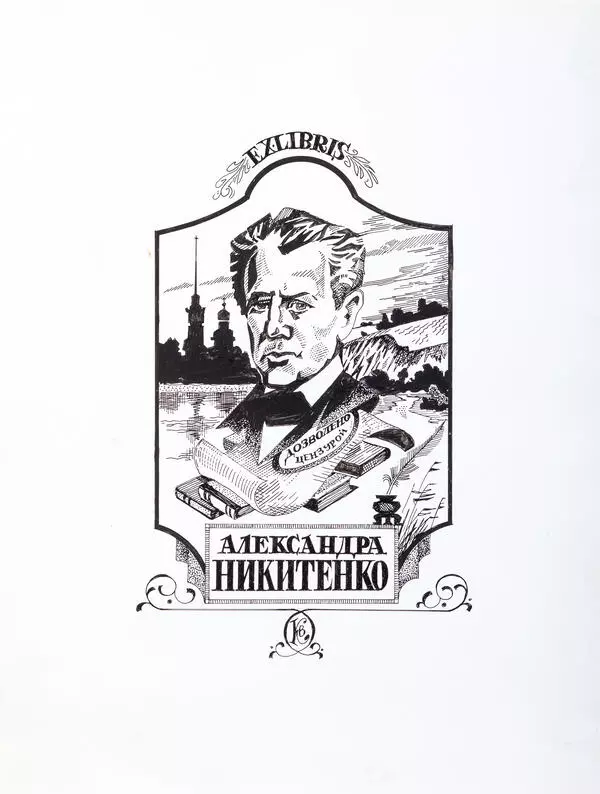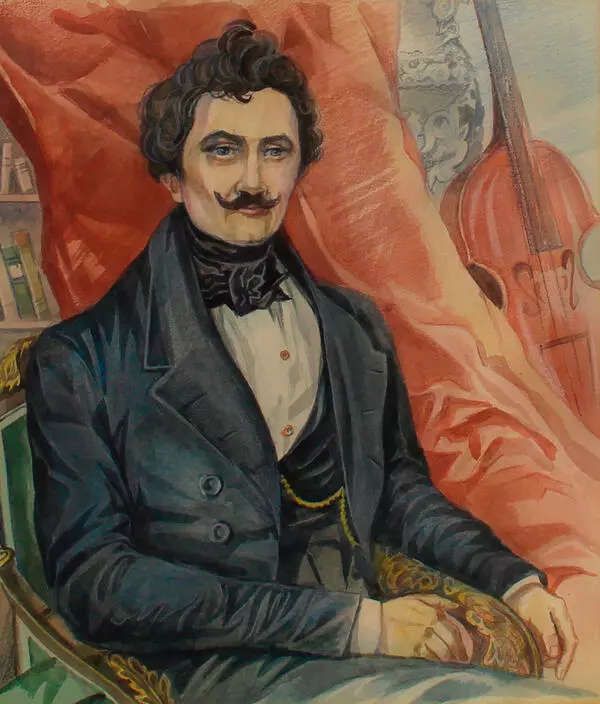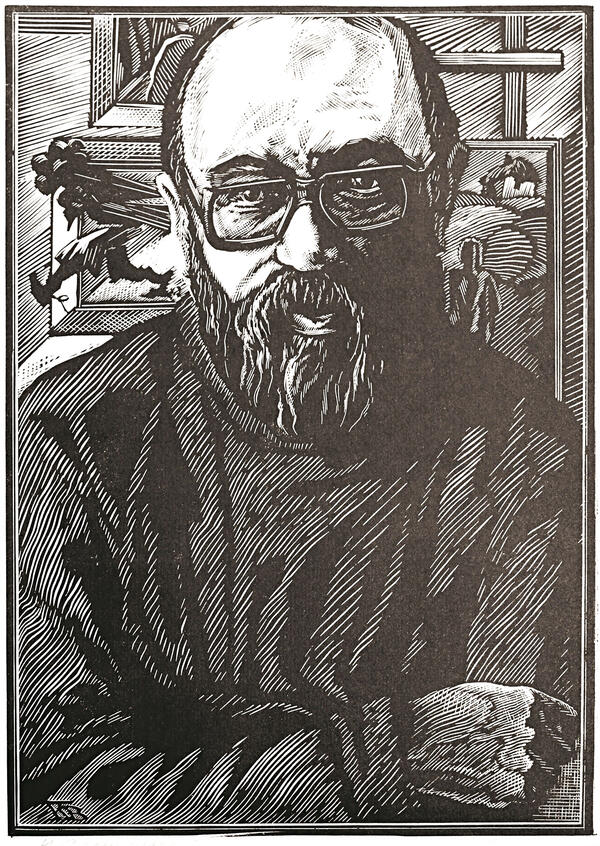Bookplates — special signs with the name of the owner of the book — were usually pasted or stamped on the endpaper of a publication.
In Russia, the first private libraries and, accordingly, bookplates belonged to the associates of Peter I, including Prince Dmitry Golitsyn, the Emperor’s physician Robert Erskine and Field Marshal Yakov Bruce. Initially, all bookplates bore a coat-of-arms, and later they began to be distinguished by font, monogram and plot; at the beginning of the 20th century, portrait-plates and name bookplates came into use.
The modern author of name bookplates, Vladimir Vladimirovich Kozmin, was born in 1941 in Irkutsk. In 1975, he moved to Belgorod, where he graduated from the Faculty of Folk Art of the Institute of Arts and Culture. He worked in various techniques: etching, engraving, linocut, woodcut, drawing, oil painting, and watercolor; he created landscapes and still lifes and was also a book illustrator.
Especially for the Belgorod Literature Museum, he created a number of bookplates, including that of Prince Nikolay Borisovich Golitsyn.
A member of one of the noblest families in Russia, Nikolay Golitsyn received a general and musical education. After graduating from the Page Corps, he took part in the Patriotic and Crimean Wars and became a Knight of the Orders of Saint Anna and Saint Vladimir, 4th class, and received a custom-engraved sword.
The literary talent of the prince manifested itself in his works in Russian and French, including a travel sketch called “Moving through the Caucasus Mountains”, a story “The Ghost-Unmasker”, memoirs “Officer Notes, or Memories of the Campaigns of 1812, 1813 and 1814” (published in 1837), poems and sketches describing the Patriotic War of 1812, and “Poetic Experiments of Prince N.B. Golitsyn”. He published most of his writings either anonymously or using pseudonyms.
Golitsyn was also engaged in translations into French of the poems of his friends Alexander Sergeyevich Pushkin and Ivan Ivanovich Kozlov.
Prince Golitsyn made musical enlightenment his life’s work. After his retirement, in the 1820s, he began to regularly give concerts in private assemblies and salons, carried on a correspondence with Ludwig van Beethoven, and was acquainted with Frédéric Chopin and Michał Kleofas Ogiński.
The bookplate, created by Vladimir Kozmin, combines the main aspects of the life of Prince Golitsyn: his dignified noble status, music, military affairs, and literature.
In Russia, the first private libraries and, accordingly, bookplates belonged to the associates of Peter I, including Prince Dmitry Golitsyn, the Emperor’s physician Robert Erskine and Field Marshal Yakov Bruce. Initially, all bookplates bore a coat-of-arms, and later they began to be distinguished by font, monogram and plot; at the beginning of the 20th century, portrait-plates and name bookplates came into use.
The modern author of name bookplates, Vladimir Vladimirovich Kozmin, was born in 1941 in Irkutsk. In 1975, he moved to Belgorod, where he graduated from the Faculty of Folk Art of the Institute of Arts and Culture. He worked in various techniques: etching, engraving, linocut, woodcut, drawing, oil painting, and watercolor; he created landscapes and still lifes and was also a book illustrator.
Especially for the Belgorod Literature Museum, he created a number of bookplates, including that of Prince Nikolay Borisovich Golitsyn.
A member of one of the noblest families in Russia, Nikolay Golitsyn received a general and musical education. After graduating from the Page Corps, he took part in the Patriotic and Crimean Wars and became a Knight of the Orders of Saint Anna and Saint Vladimir, 4th class, and received a custom-engraved sword.
The literary talent of the prince manifested itself in his works in Russian and French, including a travel sketch called “Moving through the Caucasus Mountains”, a story “The Ghost-Unmasker”, memoirs “Officer Notes, or Memories of the Campaigns of 1812, 1813 and 1814” (published in 1837), poems and sketches describing the Patriotic War of 1812, and “Poetic Experiments of Prince N.B. Golitsyn”. He published most of his writings either anonymously or using pseudonyms.
Golitsyn was also engaged in translations into French of the poems of his friends Alexander Sergeyevich Pushkin and Ivan Ivanovich Kozlov.
Prince Golitsyn made musical enlightenment his life’s work. After his retirement, in the 1820s, he began to regularly give concerts in private assemblies and salons, carried on a correspondence with Ludwig van Beethoven, and was acquainted with Frédéric Chopin and Michał Kleofas Ogiński.
The bookplate, created by Vladimir Kozmin, combines the main aspects of the life of Prince Golitsyn: his dignified noble status, music, military affairs, and literature.

